How to Decorate Your Home with Vases: Basics and New, Unconventional Concepts by MDMAISON
Drawing from our extensive experience working on countless design projects where accessories made all the difference, we at MDMAISON have created this go-to guide on how to decorate your home with vases, packed with expert tips to help you choose an item that makes your space look exclusive and curated.
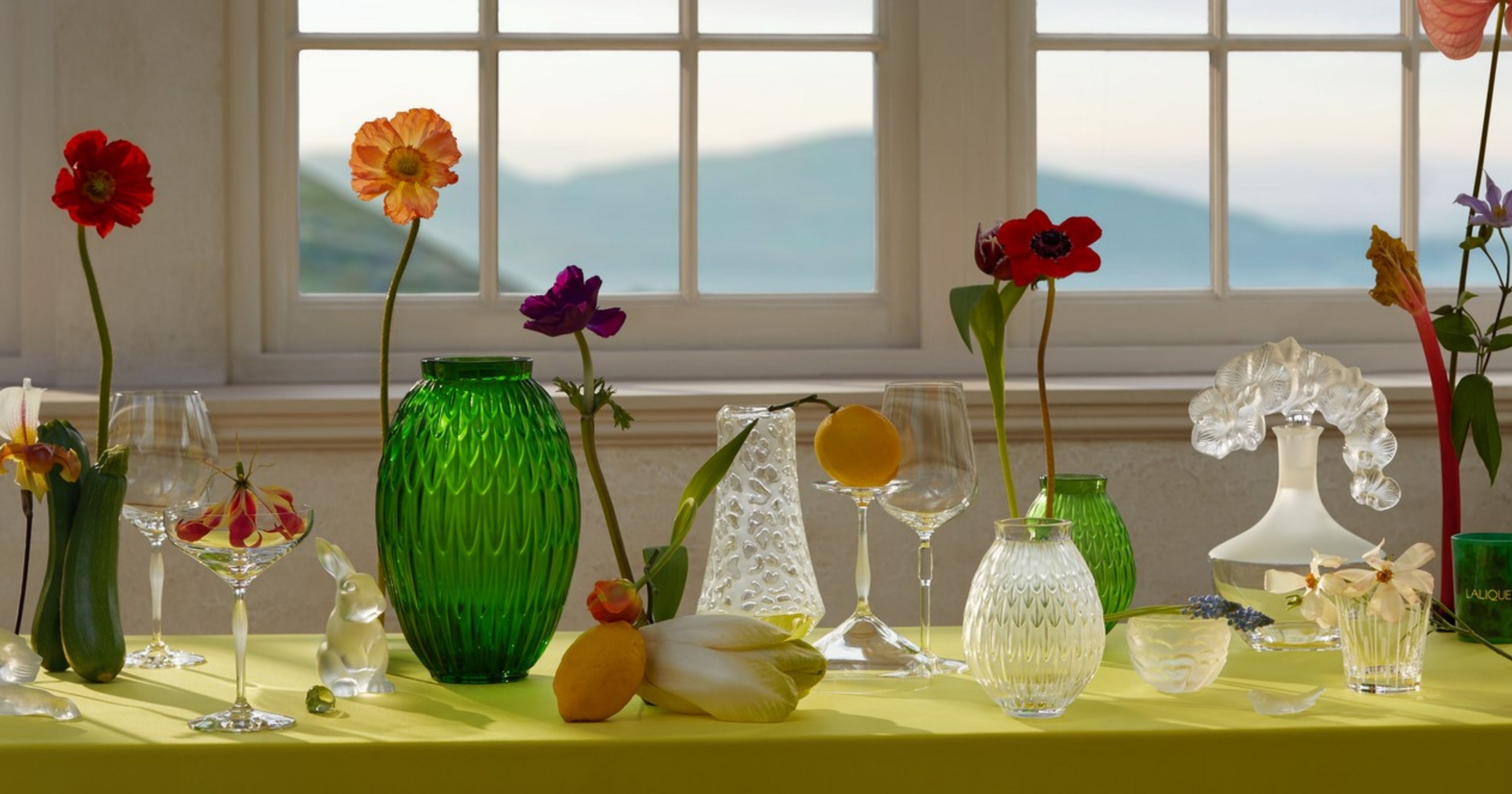
A Look at Vases: From Historical Use to Modern Trends
A vase can do so much: sit beautifully on a shelf or tabletop, stand tall in a vacant corner, or be part of a stylish cluster with others in varying sizes. Such an eye-catching detail adds character and refocuses the room, gracefully masking any visual voids.
But how did such a simple object become a staple in design?
First and foremost, it served a practical purpose. Since ancient times, they have been used in religious rituals and for storing liquids, grains, and various food items. As centuries passed and culture matured, vases transformed into canvases for creativity, adorned with textures, painted scenes, and sculptural detail.
The real golden age was arguably the 18th–19th centuries, when fine porcelain and glass items with intricate layouts became must-haves in high-society interiors and prized collectibles, and clear symbols of prestige among the aristocracy and bourgeoisie. As industrial manufacturing advanced, vessels became widely available, and much of their original value faded.
Nowadays, the art has returned with force: new aesthetics meet heritage, as artisans revive historic formats in porcelain, vibrant glass, and brilliant crystal. Designers and decorators have rediscovered these pieces as versatile artistic objects that still speak to the present, as refined accents in contemporary spaces, and we definitely have to take a closer look at how they’re used today.
Contemporary Interior Vases
Experts say that choosing the right piece can dramatically shift the look and feel of a space. Yes, it’s a true revelation, especially in the luxury segment. No longer bound by function alone, modern articles now shape the mood of an area. Whether minimalist or expressive, miniature or monumental, symmetrical or biomorphic, their forms hold a unique aesthetic charge that draws the eye and defines the room.
Above all, the material is what truly matters in decorating with vases. It starts the silhouette, informs the detailing, and determines integration into a specific concept.
So, what are the go-to materials for modern vases?
GLASS
It is the most popular and practical option. Any light glass vase with its see-through simplicity harmonizes seamlessly into the space, offering clarity without visual weight. You’ll find top-favored pieces in the collections of many well-known brands—from the Venetian glassmakers of Murano, such as Nason Moretti or Venini, to Nordic names like Iittala (Finland) and HAY (Denmark). Among other standouts:
- Georg Jensen (Denmark), where glass meets sleek metal detailing;
- Kinto (Japan), famed for minimalist form and balance;
- ARTĚL (Czech Republic/USA), a contemporary edge to luxury Bohemian glass with its hand-blown, hand-cut, and unique designer or limited series;
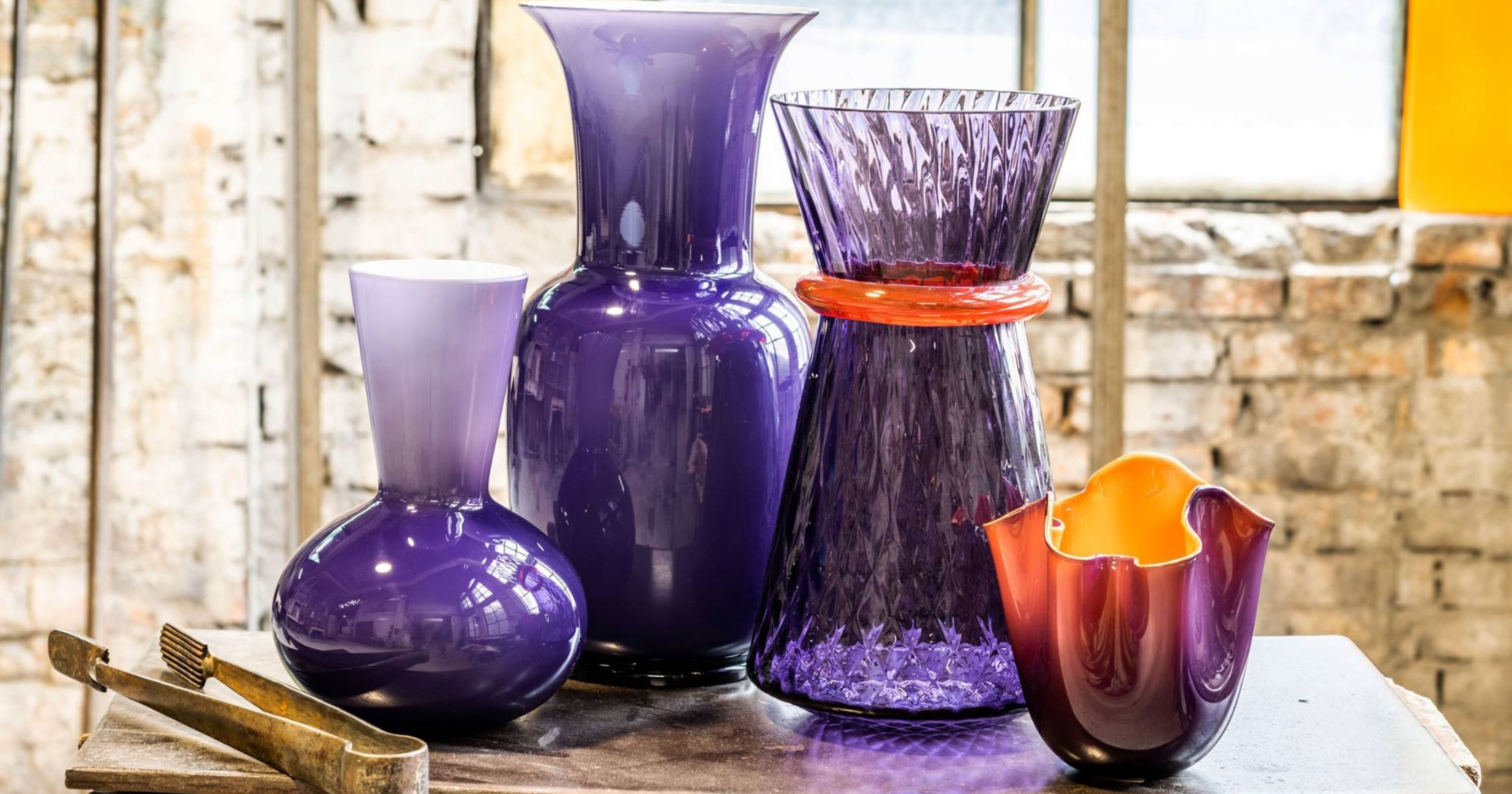
CRYSTALL GLASS
A timeless material that continues to represent the pinnacle of luxury and refinement. Even when empty, a creation like this can stand alone as an art object and add beauty and character to the room. Follow the next names:
- Baccarat (France), is pure high-end crystal glass, created entirely by hand, based on designer visions;
- Lalique (France) is known for its artistic brilliance, using a rare mix of frosted and polished textures shaped through traditional cutting methods;
- Saint-Louis (France) carries the legacy of royal France;
- Cristallerie de Montbronn (France) creates stunning collections with rich color layering, hand-blown and finished with finely detailed, engraved patterns;
- Lobmeyr (Austria) relies on the skills of 18+ artisans during shaping a single article, with every vase rooted in generations of craftsmanship;
- Theresienthal (Germany) is pure Bavarian tradition, with completely handmade items in styles from Biedermeier to Art Nouveau.
- Daum (France) creates stunning colored crystal glass pieces using the pâte de verre technique.

PORCELAIN & HIGH-END CERAMICS
Frequently used in traditional, ethnic, and bold interiors, these materials bring depth, individuality, and timeless charm. They stand out for their delicacy, fragile appearance, and exquisite detailing—all thanks to meticulous handcraftsmanship. Top names in this segment include:
- Villeroy & Boch (Germany) offers ceramic and porcelain in both classic and modern styles, across a wide range of formats and price points;
- Rosenthal (Germany) — luxury collections with distinctive, art-forward design language;
- West Elm (USA) is a decor with retro charm and modern purpose, rooted in mid-century elegance;
- Noritake (Japan) is known for traditional Japanese china featuring signature hand-painted national motifs;
- Arita Porcelain Lab (Japan) has high-end Japanese vases with precision, elegance, and traditional hand-finished decoration;
- Meissen (Germany), a name etched in porcelain history, honored for its timeless silhouettes and gorgeous hand-painted finishes;
- Herend (Hungary) — Hungarian artistry at its finest, decorated with naturalistic plant and animal illustrations;
- Vista Alegre (Portugal) is a standout Portuguese brand combining high-end porcelain and ceramics with rich enamel colors and designer touches;
- L’Objet (USA) is a high-end American brand offering porcelain with accents of metal, marble, and artisanal finishes, often in limited editions.
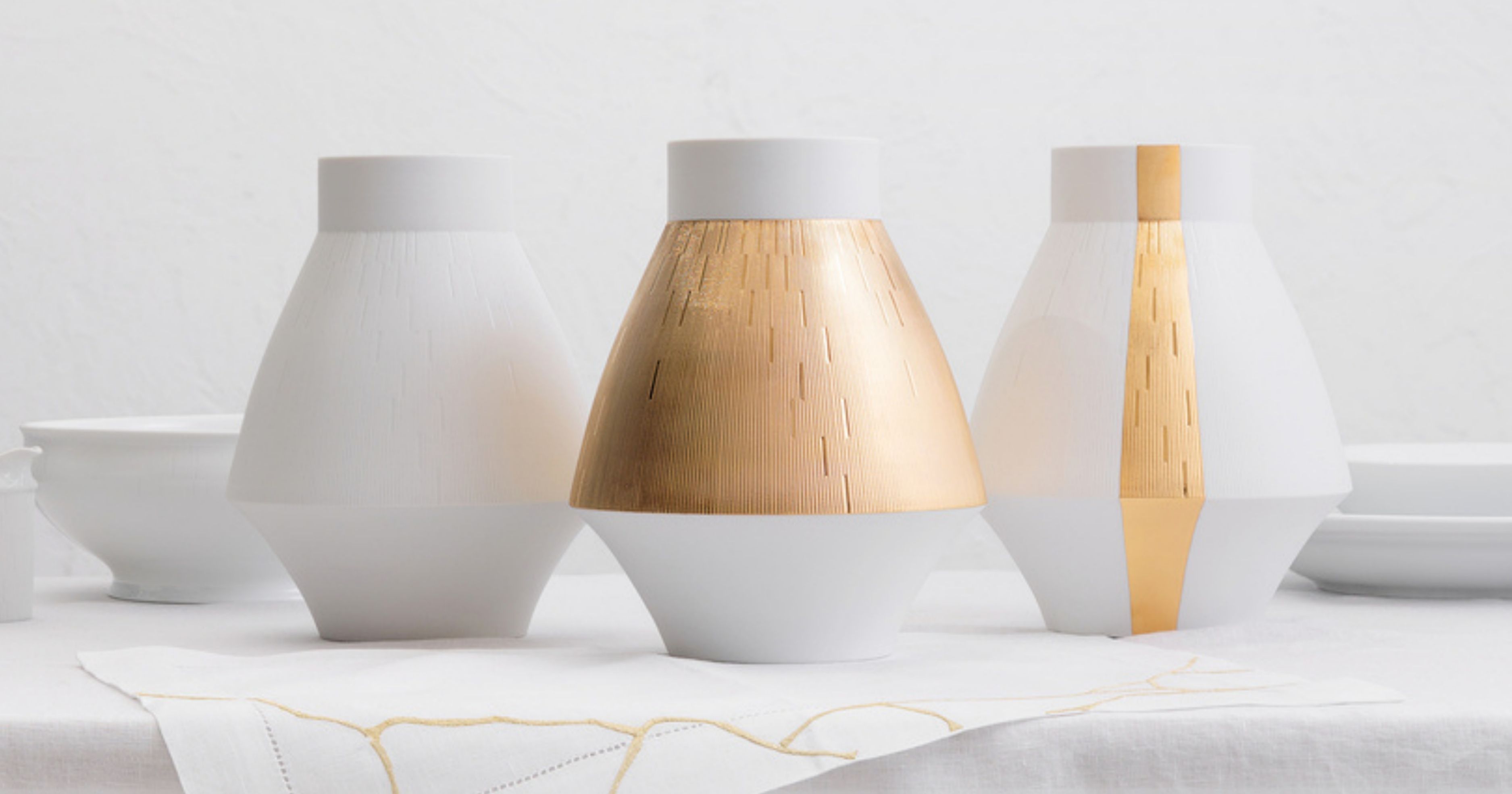
STONE
Lately, using natural stones like marble and onyx, as well as man-made options like polystone, has become a popular go-to trend in interior design. Such collections feel more solid, more substantial, and introduce natural texture and color variation you can’t get from other materials. You’ll find comparable pieces from:
- Salvatori (Italy), an expert in working with fine natural stones like marble, travertine, and limestone for timeless interior accents;
- Gem & Leaf (USA), a boutique brand creating one-of-a-kind decor from 100% natural materials, including marble, onyx, and semi-precious gems, with vases defined by their rich, exclusive textures;
- Studio EO (UK), known for sculptural, one-off flower vases. Their Rosa Portogallo design pairs sleek glass with a block of pink marble, forming a minimalist yet expressive message;
- Edizioni Milano (Italy) offers beautiful, artisanal vases carved from Verde Luana marble, a rare stone found only in the Apuan Alps.
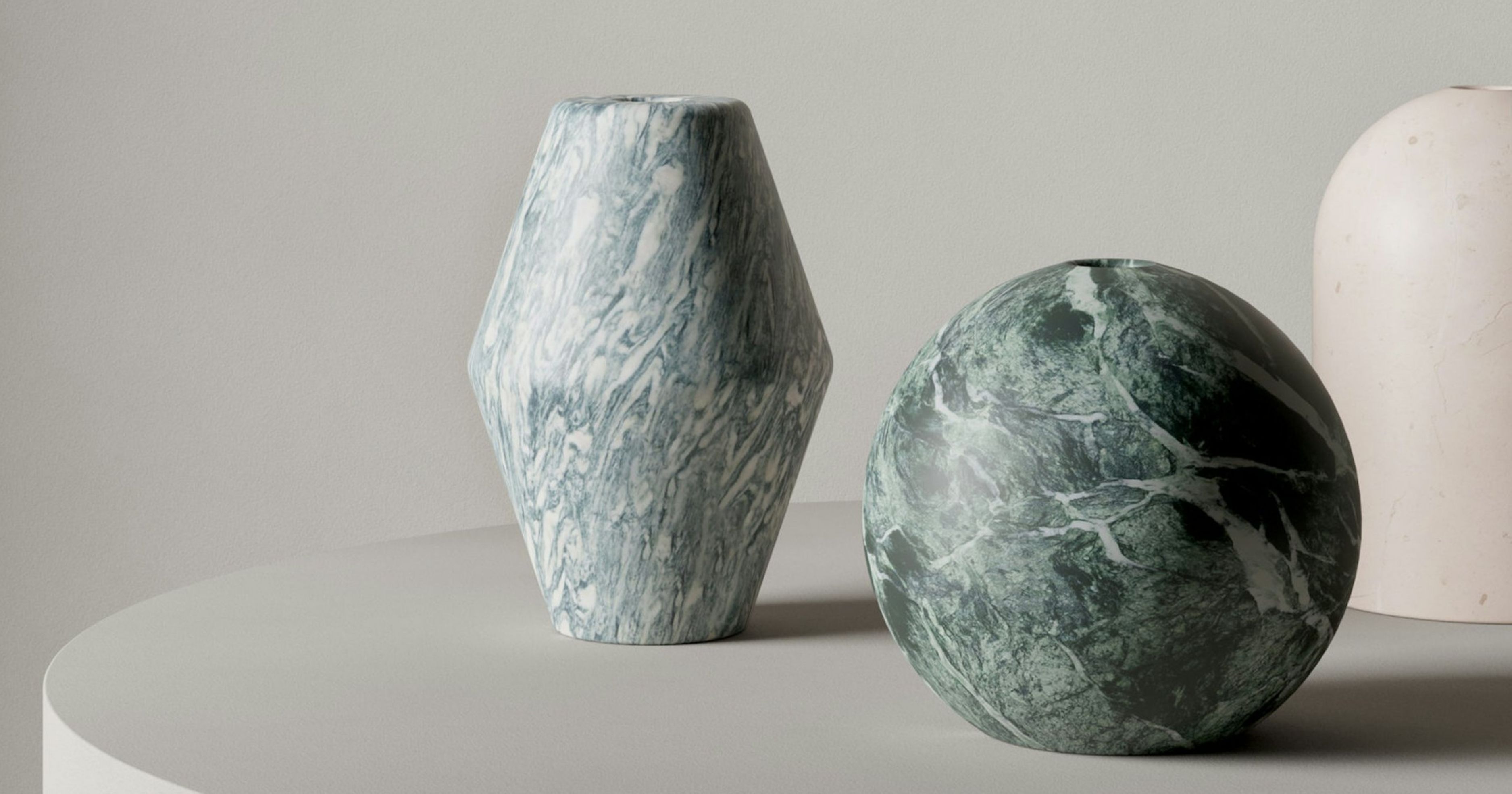
OTHER MATERIALS
From warm woods, cold-shining metal to industrial concrete, these alternative materials bring a new kind of character and contrast to vase design. Such pieces are seen more as art objects or elements of an installation, as their functional value fades, giving way to a more expressive, artistic role. For example, amazing wooden articles can be found in the collections of Danish brand Muubs, while metal layouts appear in the product lines of global names like Tom Dixon (UK) and Georg Jensen (Denmark).
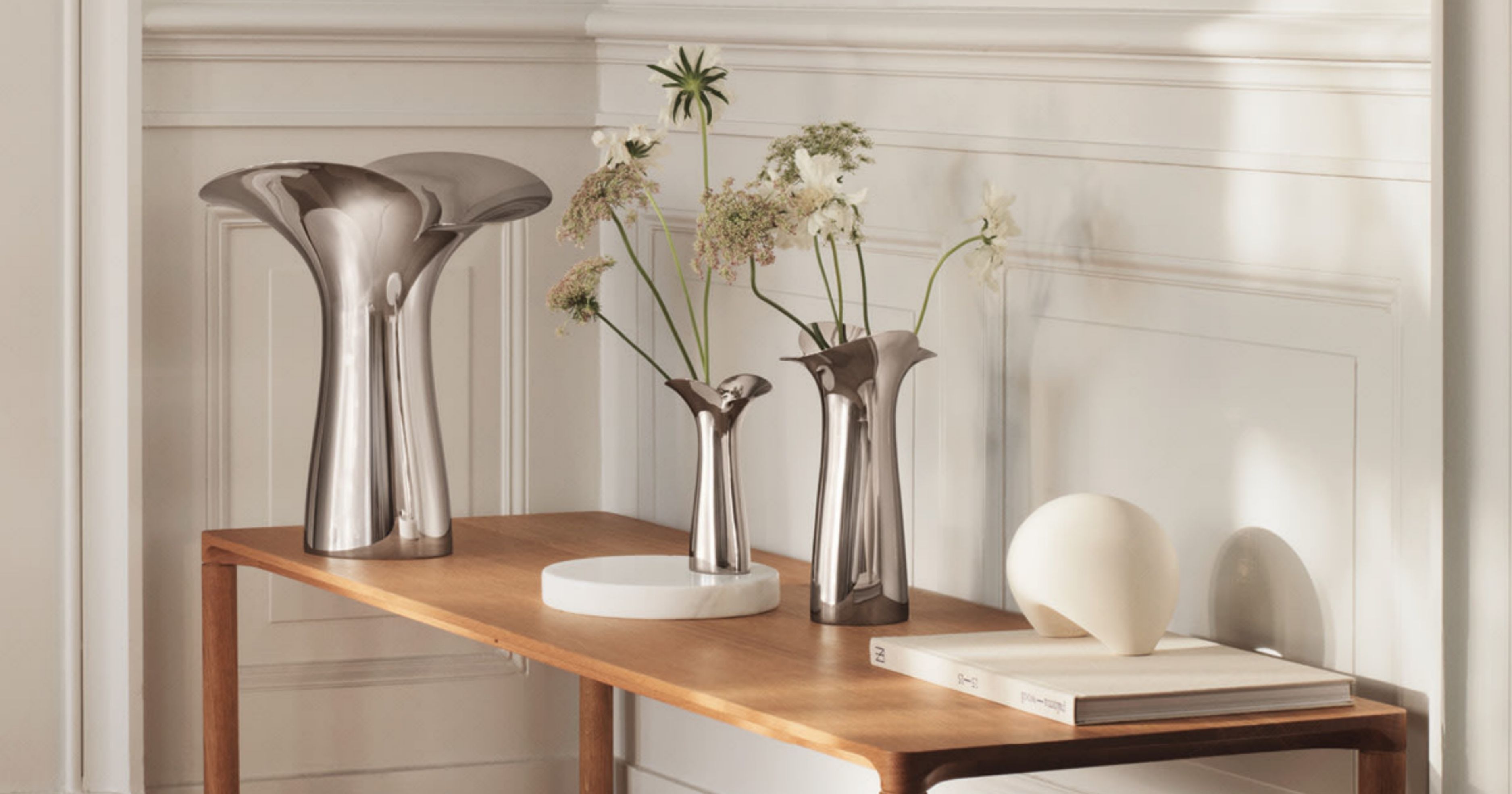
Deсor Basics: How to Use Vases in Different Types of Spaces
Vases are among the few decorative components that work effortlessly across both residential and commercial environments. But consider the purpose of the space and choose a piece or an entire arrangement that complements its overall atmosphere.
Are there situations where decorating with vases isn’t ideal? Absolutely—in compact or high-movement environments like yachts or jets, where area is limited and fragility becomes a concern. Also, avoid placing them in rooms where children or pets are often present, as they could pose a safety risk.
In all other situations, creativity is welcome: from the dining zone to the bedroom, there’s always a spot for a thoughtful choice. Here are some ideas to explore:
- An eye-catching dining table centerpiece. Go for a sculptural vase inspiration and fill it with seasonal florals. A large table offers the ideal stage to express your aesthetic confidence.
- Foyer console. Just one elegant silhouette, or a few thoughtfully placed miniatures with gentle blooms, is enough to make the interior feel calm and lived-in, so the moment the door opens, home feels like home.
- Mantel, credenza, or shelving in the living room. Try styling with a pair of pieces or assemble an asymmetrical composition for a fresh, trendy feel.
- A cozy nook with a massive single floor vase or with a curated group. In spacious homes, these voids are common, and vases are a simple, elegant fix.
- Bathrooms and kitchens. A tiny vessel on the vanity, a ceramic piece tucked into a kitchen nook—these are the quiet gestures that make a house feel considered, personal, and alive.
- Home office and workspace decor. You can experiment with different sizes, from minimalist details on shelves to larger bottom installations, if the interiors allow. Choosing an extravagance or designer shape does more than complete the area; it tells a story of personal triumph and effortlessly sophisticated style.
- Corridors. Use decorative elements in your hallways. Tall items with artful fillers are perfect for corners near lounge areas or elevators to help subtly zone.
- Formal dining and banquet areas. Place vases with fresh flowers generously in rooms where gatherings happen—they’re more than decor; they amplify the atmosphere.
Choosing Vase Inspiration for Popular Interior Styles
Before selecting your perfect vase inspiration, take a moment to grasp the overall aesthetic principles behind the most popular interior styles, because a detail must speak the same language as the rest of the space. And that’s precisely why a lot of clients leave this to the experts to make sure the choice hits the mark on the first try.
It really is important to match the piece to your interior style, and that’s what determines the right material, proportions, and overall vibe.
So next, we’ll explore how to decorate your home with vases tailored to specific design styles.
Minimalism
Minimalism favors simplicity and clarity. Vases in this style are typically made from glass, clay, or concrete, with neutral colors and clean silhouettes. No patterns, no extra decoration—just quiet geometry and space that breathes. Some of our ideas:
- A sleek black floor piece with vivid flowers can energize a neutral room while still keeping the look clean and simple.
- Paired white forms with sculptural branches (floor or tabletop scale) create graphic impact while maintaining order and purity.
- A sculptural grouping of geometric items mismatched in form but united in style — becomes a quiet design statement, adding depth without disrupting the serenity.
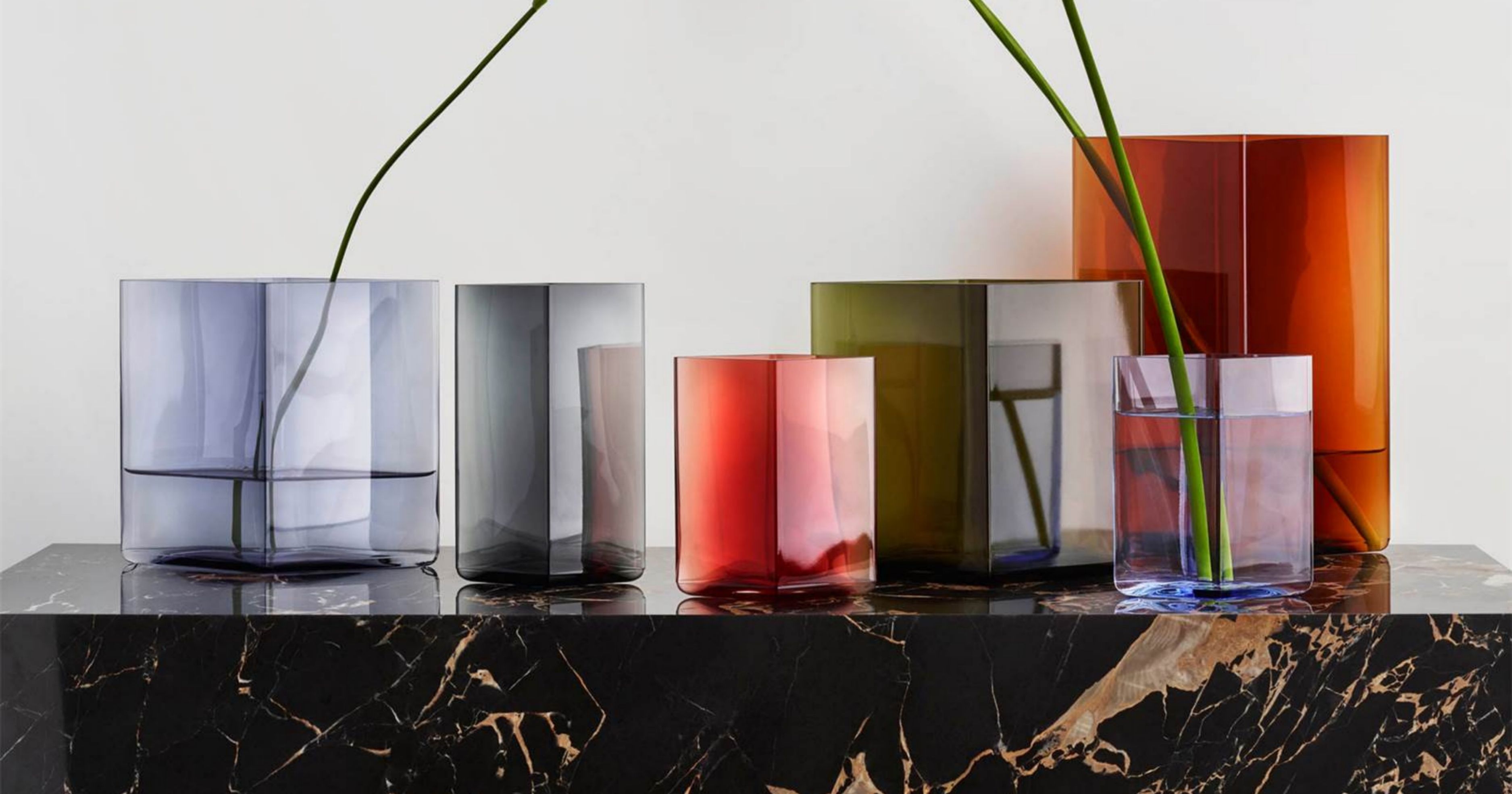
Scandinavian
In a cool-toned interior, vases made of matte ceramic, clear glass, or light wood in natural, soft shades always look just right. Their shapes should be simple and smooth — no sharp edges or overly complex lines.How to decorate with vases in Scandi-style:
- In a Nordic space, a line of soft-toned ceramic — white or pastel, simple and serene—becomes a quiet statement of elegance and order.
- A few see-through vases in different shapes on the windowsill will let sunlight pour in and subtly expand the room.
- Rustic ceramic pieces are a distinctive design choice. Look for rough-fired clay, wood, or earthenware to bring in raw textures and natural tones.
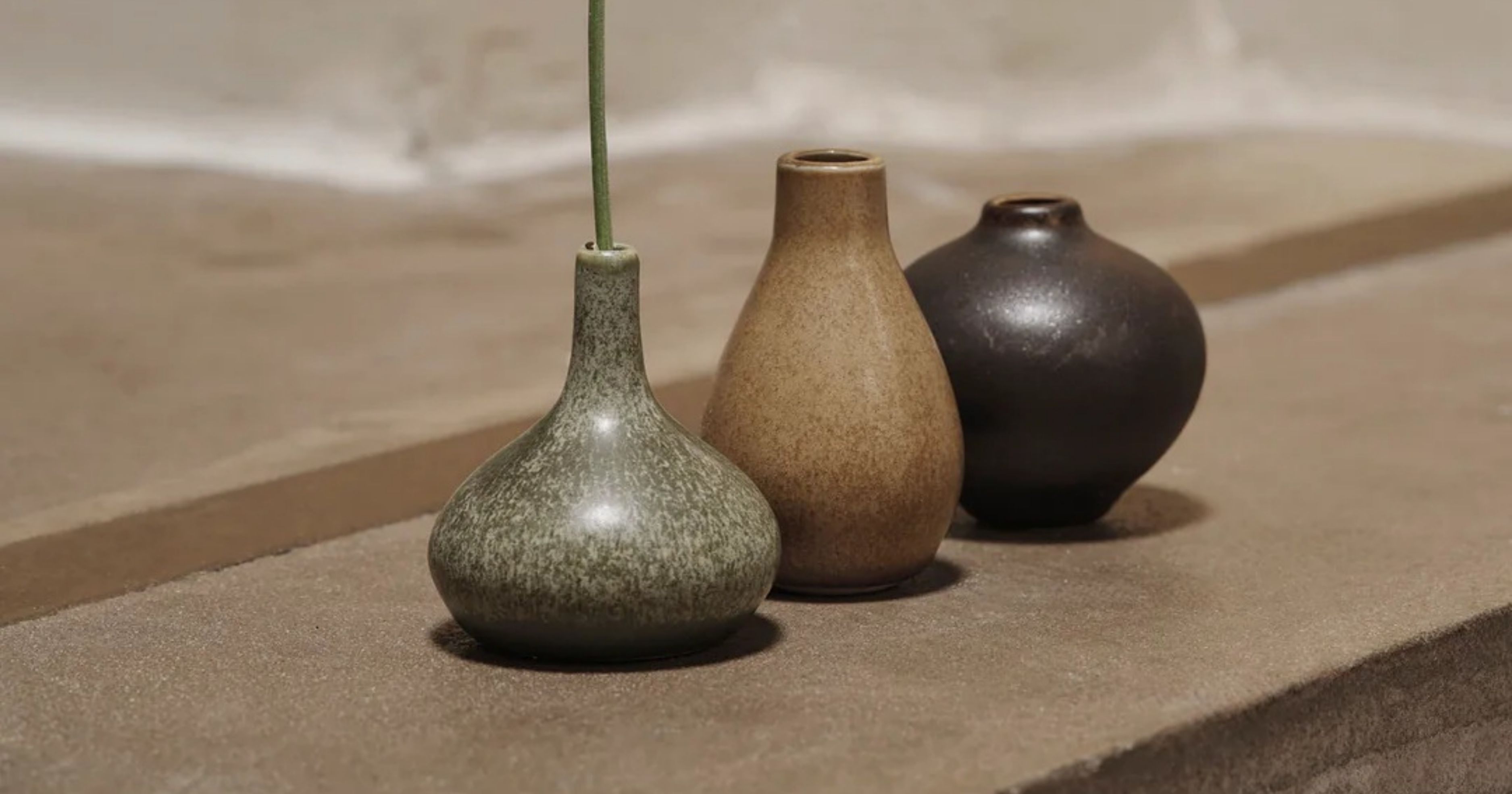
Boho
Boho spaces favor artisanal handmade collections with ethnic patterns, aged textures, or unusual shapes in materials like ceramic, glass, or metal. Mix colors and sizes freely to create a layered, eclectic composition. Some great styling tips:
- Display an eclectic mix of vintage vases or hand-painted ceramics with heritage motifs—it's a styling move that always feels authentic.
- Build a decorative color cluster: mix rich, saturated hues and varied silhouettes for a vibrant, yet intentional composition.
- Complete the look with bearing ethnic or folk details like hand-painted Japanese porcelain, African motifs, or vividly glazed Mexican pieces—for a soulful, bohemian mix that feels collected over time.
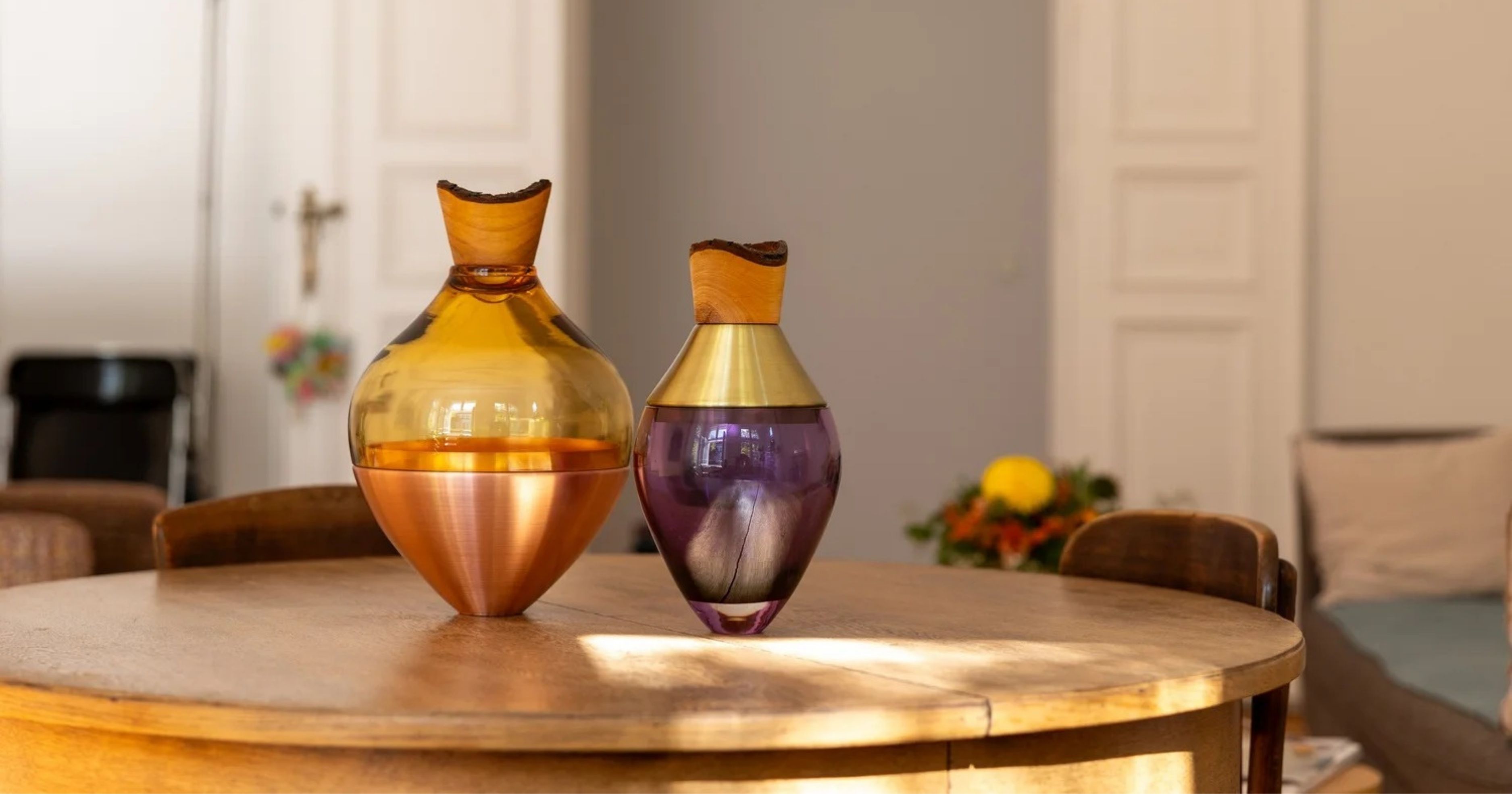
Classic
Classic interiors call for china, crystal, or fine ceramic with elegant shapes and refined decorative elements. With hand-painted patterns and even real 24-karat gilding, these vases bring elegance and status to any classic area. What always works:
- Symmetry—always arrange a matching pair on either side of the room or simple display to create a sense of harmony and grandeur.
- Oriental influence of Ming-inspired porcelain in classic blue and white will bring grace and quiet luxury to a traditional space.
- Classic interiors love gold. For example, a cream-toned floor piece adorned with shining detail or baroque scrollwork adds a layer of elegant extravagance.
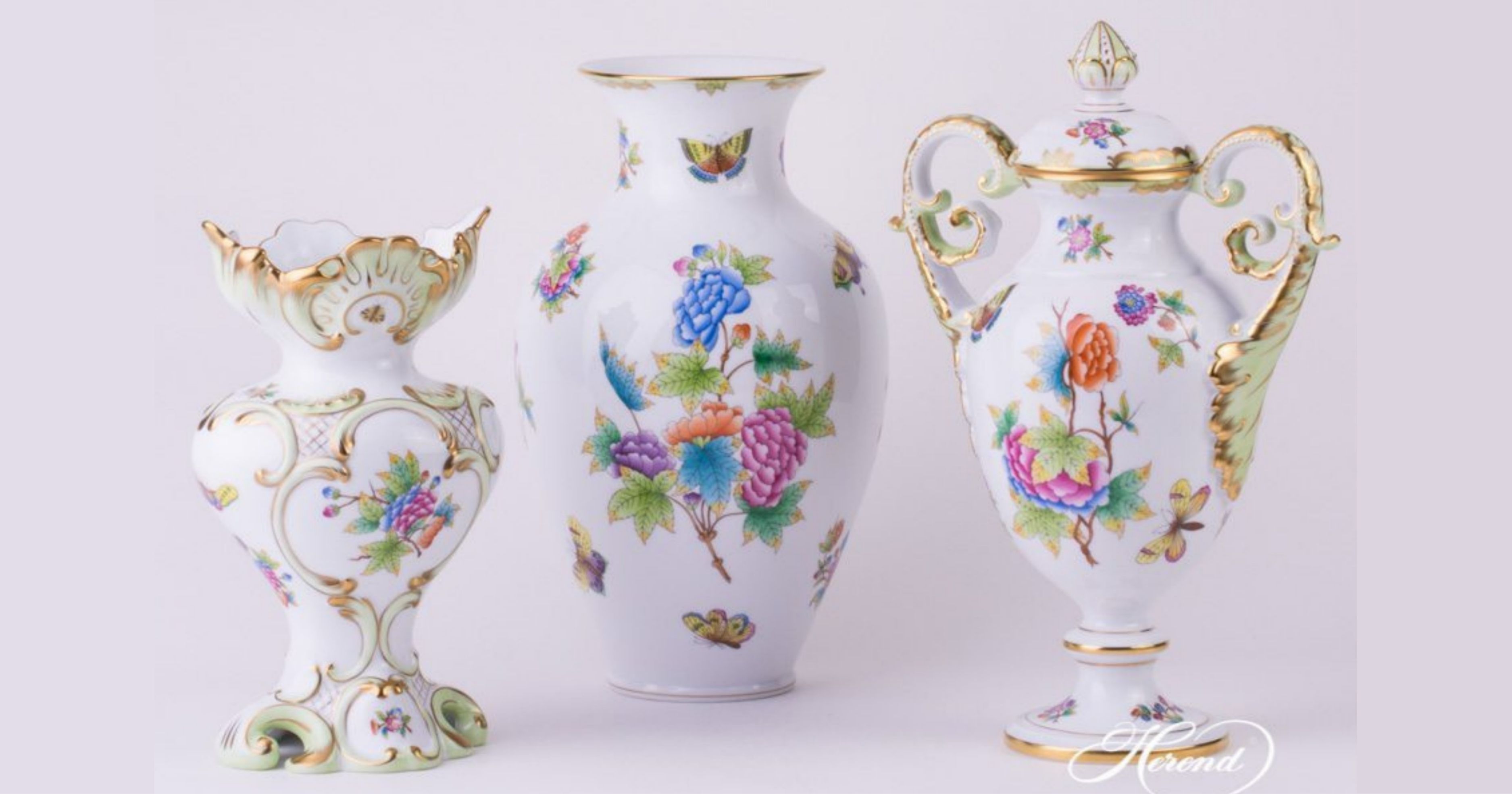
Loft
Vases made of raw, industrial materials in bold, minimalist shapes are a must-have in interiors with exposed brick and visible technical elements. Ideas to try:
- Floor-standing items with a raw, brutalist edge will echo the weight and honesty of your apartment.
- Geometry is a favorite motif, so think cubed vessels, angular silhouettes, or prism-inspired forms.
- Play with juxtaposed textures: soft, colorful set against the raw texture of brick creates a visually rich and modern scene.
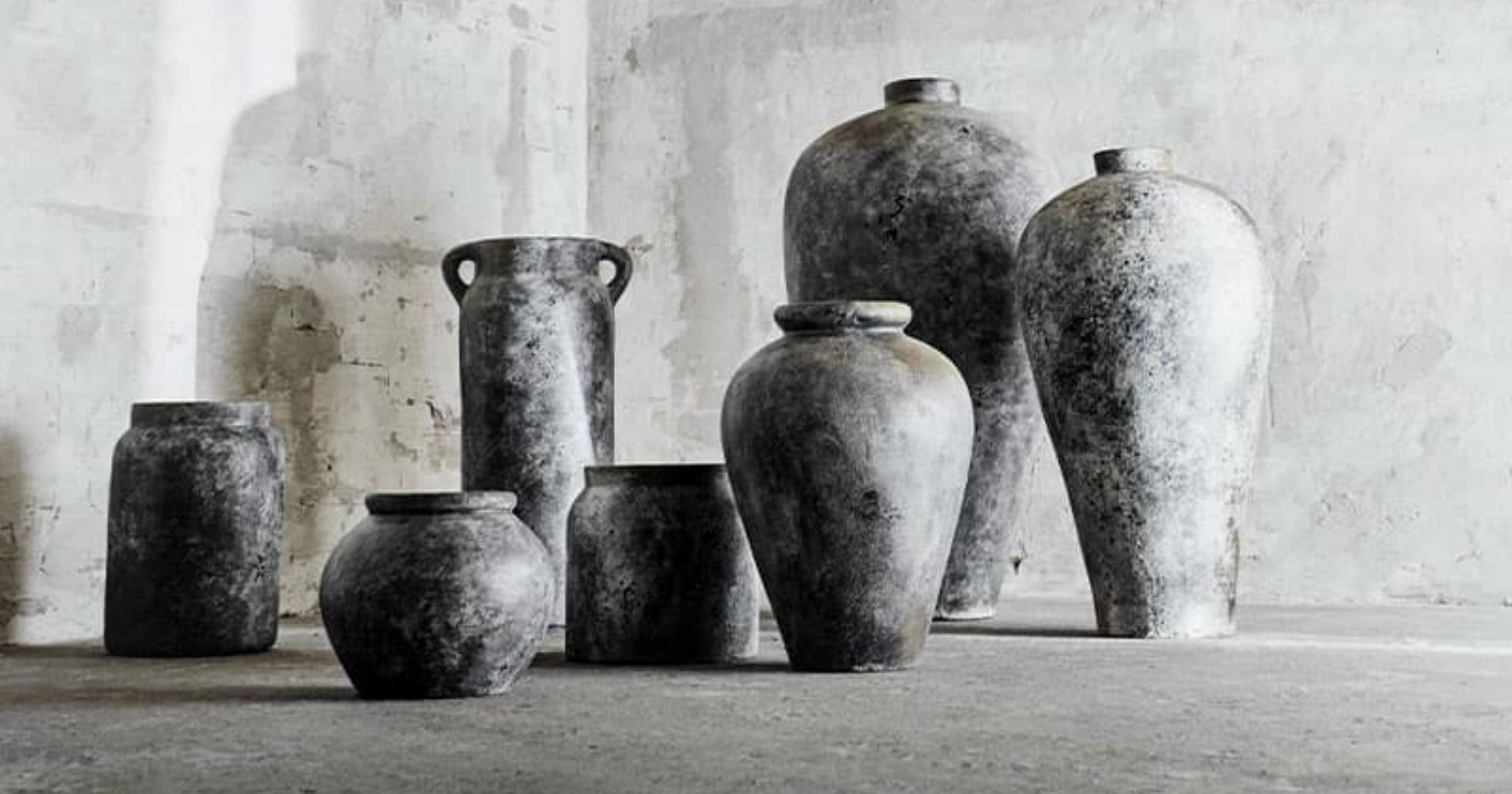
Eclectic Style
In eclectic interiors, all kinds of mixes and variations in shape, color, and size are welcome. The key is to have a unifying thread so that every piece reflects personality and contributes to a bold, thoughtful composition, not just a random collection of things. Try combining: it’s an easy way to make the space feel more expressive and full of life. Concepts for styling:
- Implement items from various time periods and cultural origins. Try placing a minimalist glass cylinder next to an intricately painted porcelain vase with Eastern flair.
- Style a curated vignette on a shelf or console using articles from different design eras: an Art Deco crystal piece, a 1970s ceramic, and a handcrafted avant-garde form.
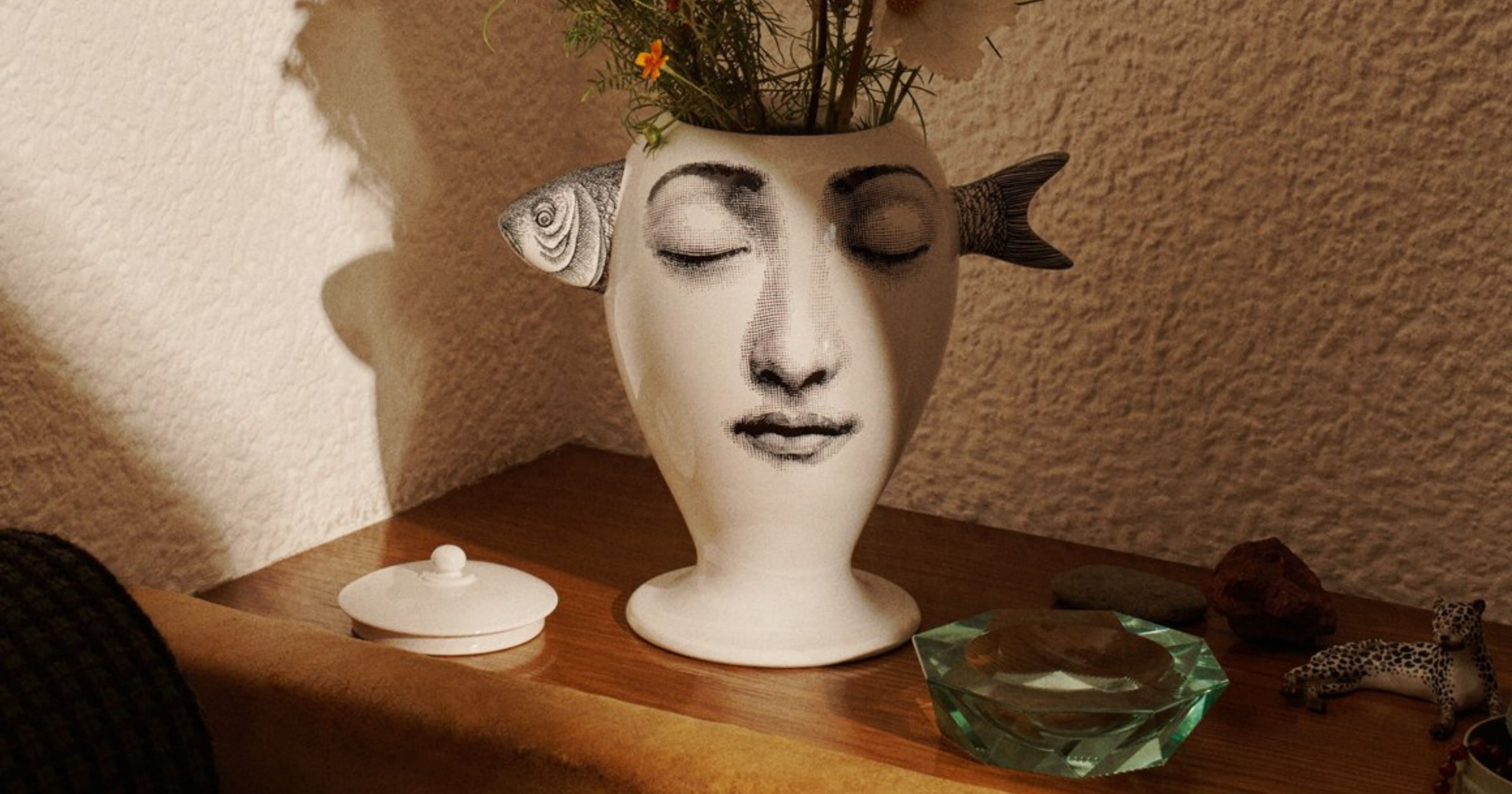
Art Deco
Channel the glamour of the Jazz Age with vases that gleam: polished glass, reflective crystal, or sleek ceramics in bold forms, trimmed with gold, chrome, or black lacquer. It’s all about elegance with a graphic twist. Design tip:
- Opt for a strong geometry like black-and-white stripes or angular zigzags. It will serve as a visual focal point and bring that signature drama and polish.
- Art Deco thrives on richness: search for lines adorned with gold, whether it’s a fine gilded motif, an elegant rim, or an entire piece in shining glass.
- A large crystal-cut form or one made of colored look stunning, especially when the light hits it just right and adds that glowing, luxe atmosphere.

Contemporary
Modern design pairs beautifully with vases that have refined forms, subtle textures, and sculptural simplicity. Choose metal, glass, or matte ceramic in elegant, neutral tones or deep, dramatic hues. What works well here:
- Try modular sets that can be grouped together, a collection of varying heights or bodies that work as a single sculptural composition.
- Modern style is open to bold ideas, like donut-shaped or tubular formats, which are a perfect way to add a stylish, of-the-moment accent.

Vase Inspiration by MDMAISON: Our Top Luxury Picks
After walking you through materials, styles, and tips on how to decorate with vases, we’d like to share a few personal notes and curated recommendations from our favorite collections.
At MDMAISON, we work exclusively in the luxury segment: it’s more than just our niche — it’s our natural environment. And here are some of our most-loved pieces and ones we’re proud to recommend:
- The iconic handcrafted collections from Lalique with matte and glossy colored crystal in both Art Deco and Art Nouveau styles, like Bacchantes, Anémone, Tourbillons, Champs-Élysées, and Magnitude, work beautifully across a variety of interiors and functions.
- You absolutely need to check out Daum, a standout brand in the world of colored crystal glass, and vases like Jardin de Cactus, Rose Passion, Saffron, Maya, Croisière, or Mer de Corail, Poétique by Tamara Ralph, the hand-sculpted art objects with intense color and truly expressive shapes.
- Baccarat has long been a symbol of crystal artistry, and when it comes to vases, our top picks are Eye, Harcourt, and Louxor with sleek silhouettes and a cool, architectural edge.
- The iconic Fazzoletto Opalino vases by Venini, with their soft wavy rims, and Samarcanda by Nason Moretti are stunning Murano glass pieces that work beautifully across classic or contemporary interiors.
- Some vases are more than decor: porcelain icons like Herend’s Queen Victoria, Oriente Italiano by Ginori 1735, sculptural ceramics such as Rosenthal’s Squall or Phases, the striking metal-and-glass blends of Black Orchid or Butterfly Ginkgo by Michael Aram, and the legendary cobalt pattern Transatlântica by Vista Alegre.
Our tips don’t end here, and we have plenty of fresh ideas and plans still to share. Follow our blog for more design stories and inspiring trends, or get in touch with us to find the perfect vase inspiration to unlock the full design potential of your home or interior project.

